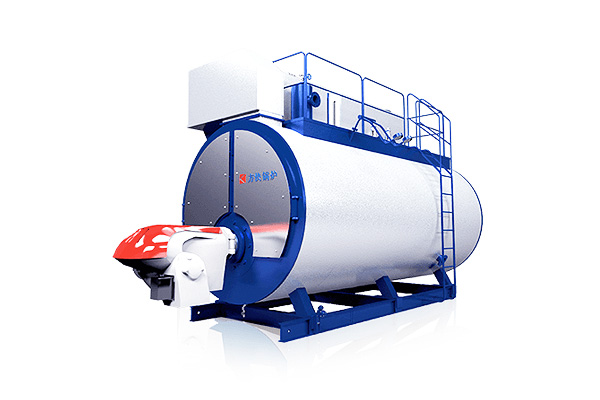What are the energy saving measures for gas boilers?
2021-11-25 14:42:49
Gas boilers provide power and energy for various industries such as chemical industry, light industry, military industry, etc.; they are also an important target of pollution emission control and large energy consumers. Over the years, Fangkuai boilers have been devoted to the research and application of gas boiler energy-saving and environmental protection technologies. , Committed to providing users with more energy-saving and cost-effective gas boiler equipment.
The structure of gas boilers varies according to different industries and processes. There are many types. With the advancement of science and technology, the implementation of energy saving and environmental protection policies and the development of market competition, the structure of gas boilers produced by Fangkuai boilers is continuously improved and optimized. The main purpose is to improve combustion conditions, reduce exhaust emissions, and recycle energy. The structural effect can not only reduce energy consumption, but also improve product quality and increase output.
1. According to the amount of steam required for industrial production, reasonably select the rated power of the gas boiler and the number of boilers. The higher the matching degree between these two conditions and the actual use, the smaller the exhaust loss and the more obvious the energy-saving effect;
2. Full contact between fuel and air: Let the right amount of fuel and air form a precise approval ratio before burning, which can not only improve the fuel combustion efficiency, but also reduce the emission of polluting gases, and achieve the purpose of double energy saving;
3. Reduce the exhaust gas temperature of the gas boiler: the waste heat generated in the exhaust gas can be used to recover and reuse this part of the waste heat. The thermal efficiency of general boilers is around 85-88%, and the exhaust gas temperature is 220-230℃. If advanced waste heat recovery devices such as economizers and condensers are installed, after using the heat of exhaust gas, the exhaust gas temperature will drop below 140℃, and the boiler efficiency can be increased to about 95-108%;
4. Recovery and reuse of the heat of the boiler sewage: through the heat exchange device, the heat in the continuous sewage is accumulated, and the feed water temperature of the deoxygenated water is increased to achieve the energy-saving purpose of the gas boiler.
Fangkuai boiler will be manually controlled or semi-automatically controlled into automatic control. According to the product process requirements, comprehensively adjust the feed volume, fuel supply volume, air intake and induced air volume, so that the boiler runs in good condition and can obtain good energy-saving effects.
And provide each customer with remote monitoring, real-time understanding of the boiler operating data, to ensure that the boiler is in a healthy operating state, to achieve low energy consumption, low emissions, and safety. It is equivalent to equip each boiler in use with a private Doctor".
With the increasing market demand for energy-saving and environmentally-friendly boilers, we believe that the development of our Fangkuai boilers will usher in new and greater development opportunities on the track of energy-saving and emission reduction.
The structure of gas boilers varies according to different industries and processes. There are many types. With the advancement of science and technology, the implementation of energy saving and environmental protection policies and the development of market competition, the structure of gas boilers produced by Fangkuai boilers is continuously improved and optimized. The main purpose is to improve combustion conditions, reduce exhaust emissions, and recycle energy. The structural effect can not only reduce energy consumption, but also improve product quality and increase output.
1. According to the amount of steam required for industrial production, reasonably select the rated power of the gas boiler and the number of boilers. The higher the matching degree between these two conditions and the actual use, the smaller the exhaust loss and the more obvious the energy-saving effect;
2. Full contact between fuel and air: Let the right amount of fuel and air form a precise approval ratio before burning, which can not only improve the fuel combustion efficiency, but also reduce the emission of polluting gases, and achieve the purpose of double energy saving;
3. Reduce the exhaust gas temperature of the gas boiler: the waste heat generated in the exhaust gas can be used to recover and reuse this part of the waste heat. The thermal efficiency of general boilers is around 85-88%, and the exhaust gas temperature is 220-230℃. If advanced waste heat recovery devices such as economizers and condensers are installed, after using the heat of exhaust gas, the exhaust gas temperature will drop below 140℃, and the boiler efficiency can be increased to about 95-108%;
4. Recovery and reuse of the heat of the boiler sewage: through the heat exchange device, the heat in the continuous sewage is accumulated, and the feed water temperature of the deoxygenated water is increased to achieve the energy-saving purpose of the gas boiler.
Fangkuai boiler will be manually controlled or semi-automatically controlled into automatic control. According to the product process requirements, comprehensively adjust the feed volume, fuel supply volume, air intake and induced air volume, so that the boiler runs in good condition and can obtain good energy-saving effects.
And provide each customer with remote monitoring, real-time understanding of the boiler operating data, to ensure that the boiler is in a healthy operating state, to achieve low energy consumption, low emissions, and safety. It is equivalent to equip each boiler in use with a private Doctor".
With the increasing market demand for energy-saving and environmentally-friendly boilers, we believe that the development of our Fangkuai boilers will usher in new and greater development opportunities on the track of energy-saving and emission reduction.









 Consultation
Consultation
